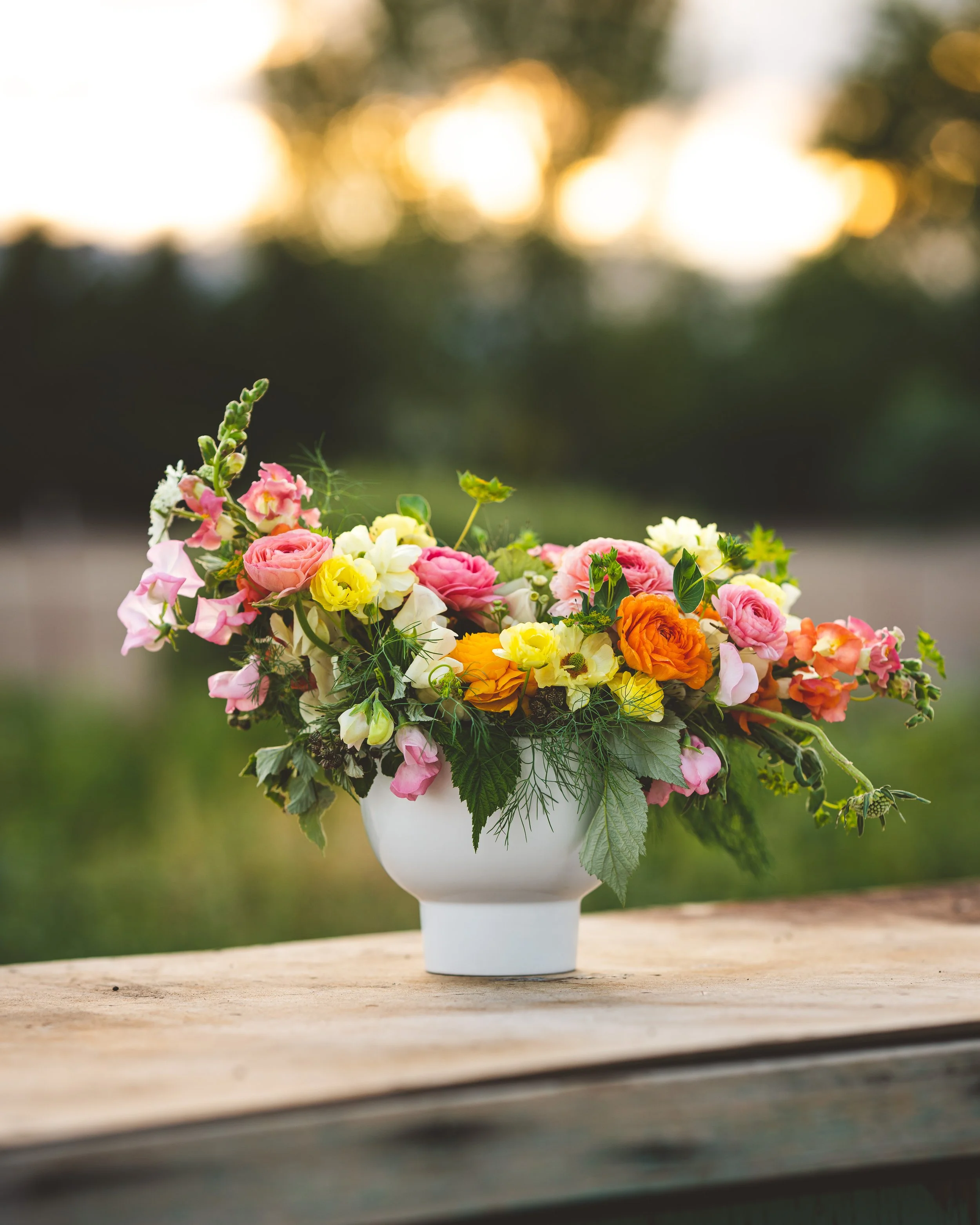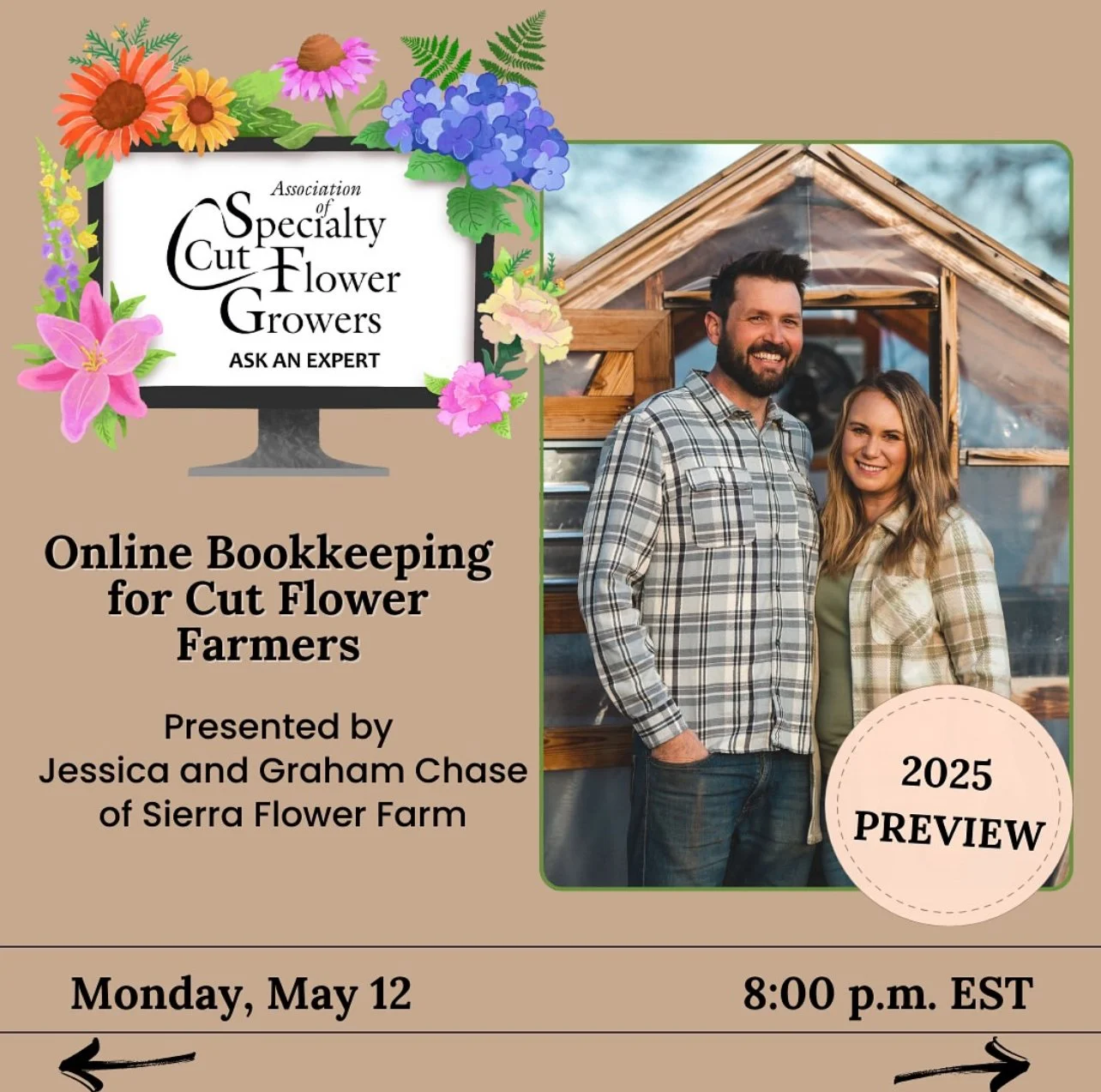Marketing Basics for Flower Farmers: Mastering Promotion (Part Three)
You don’t need to go viral to promote your flower farm—you just need the right strategy and a clear, authentic voice.
In this final installment of our Marketing Basics series, we’ll explore actionable ways to promote your flowers without feeling overwhelmed or salesy. From understanding your audience to using organic marketing and digital tools, this guide is designed to help you connect with the right customers and grow your business with intention.
In this post, we’ll cover:
How to define and understand your ideal audience
Choosing the right marketing channels for your farm
Free and low-cost ways to promote your flowers
How to show up consistently (without burning out)
Tips for building long-term customer relationships
Missed a section?
Catch up here:
Standing amidst a sea of blooming zinnias, this is where thoughtful promotion begins—right in the field.
What Is Promotion?
Promotion is the final step in marketing—it’s how you bring awareness to your flowers and inspire customers to buy.
But it’s not just about spreading the word. It’s about connecting with your audience in a meaningful way that builds trust and encourages support.
Before diving into strategies, ask yourself:
Why should customers purchase from you?
Keep the answer positive and rooted in your values.
Think about:
The beauty of your blooms
The care you put into growing them
The experience and story behind your farm
Different Promotional Strategies
1. Target Marketing: Reaching Your Ideal Audience
Target marketing is the process of identifying the customers most likely to value and purchase your flowers.
Start by looking at three key areas:
Demographics
Age, gender, income level. Many flower farmers find their audience includes women aged 25–65 who value sustainable or seasonal products.Psychographics
Values, interests, lifestyle. Are they eco-conscious, luxury-minded, or looking for affordable, local goods?Behavior
Buying patterns. Do they prefer CSA subscriptions, market bouquets, or seasonal workshops?
How to get started:
Use Instagram Insights or Google Analytics to learn more about your audience
Run social media polls or surveys
Track what types of products sell best over time
2. Personalized Marketing: Adapting to Your Audience
While target marketing helps you define who your audience is, personalized marketing is about adapting based on how they interact with your business.
Examples of personalized marketing:
Tailoring your offerings
If mixed bouquets always sell out but single stems linger, adjust your offerings to meet demand.Adjusting your messaging
Pay attention to what words resonate. Are your customers drawn to “luxury blooms,” “local flowers,” or “farm-grown beauty”?Responding to feedback
If you get frequent questions about workshops or CSA shares, it might be time to add or highlight those services.
3. Social Media
Social media is one of the most powerful (and accessible) tools flower farmers have to promote their work.
Platform tips:
Instagram
Share flower photos, farm life behind-the-scenes, or short-form Reels. Use geotags to reach nearby customers.Pinterest
Pin bouquet designs, blog posts, or seasonal color palettes to drive traffic to your website.Facebook
Use a business page to share seasonal availability, pop-up announcements, and workshop details with your local audience.
Pro Tip:
Be consistent, but focus on quality over quantity. A single meaningful post will do more than five rushed ones.
4. Email Campaigns
Email is a direct line to your most engaged customers.
It keeps your farm top-of-mind and encourages repeat business.
Use email to:
Announce CSA openings, workshops, or events
Share seasonal updates or growing tips
Offer early access to sales or promotions
Pro Tip:
Build your list slowly and steadily. Add sign-up forms to your website and offer an email opt-in at markets or events.
5. Local Outreach
Never underestimate the power of your local community.
Some simple, high-impact ways to promote locally:
Collaborate with wedding planners, cafés, or other farms
Offer guest talks at garden clubs, schools, or community events
Host on-farm events like U-picks, farm tours, or seasonal design workshops
These face-to-face moments build strong relationships and lasting impressions.
6. SEO and Website Optimization
Your website is often the first impression customers get—make it count.
Here’s where to focus:
Local SEO
Use keywords like “local flowers near [your town]” or “farm-grown dahlias” to help people find you in search results.Fresh content
Keep your blog and shop pages updated regularly.Strong visuals
Use high-quality photos that reflect your style and show off your flowers beautifully.
Want to dive into how to take stunning photos of your beautiful blooms? Check out our blog post here.
Authenticity blooms in moments like this—our family, our farm, and a lovable/goofy pup bringing joy to the everyday.
The Power of Authenticity
Authenticity is your superpower in marketing.
Customers want to support businesses that feel real and relatable. Here’s how to bring authenticity into your promotions:
Share Your Story
Talk about why you started flower farming, your values, and the moments that make you proud.Showcase Your Process
Share behind-the-scenes glimpses of planting, harvesting, or creating arrangements.Celebrate Imperfections
Not every flower is perfect—and that’s okay. Sharing honest, real-life moments builds trust.Step in Front of the Camera
Let customers see the person behind the flowers. It helps them feel personally connected to your work.
Strategies to Use Sparingly or Avoid
While there are many effective promotional strategies, some should be used with caution—or skipped entirely:
Aggressive Discounting
Frequent discounts can devalue your flowers. Instead, offer seasonal promotions or value-added bundles (like pairing with a vase or handwritten note).Overposting
Avoid flooding your audience with too many posts. Focus on quality content that resonates.One-Platform Reliance
Don’t depend solely on one channel (like Instagram). Diversify your marketing across platforms and in-person touchpoints.Negative Messaging
Stay focused on the beauty of your flowers and what makes your business unique—avoid calling out competitors or imported blooms.
Organic Advertising: Building Connections That Last
Organic advertising isn’t just budget-friendly—it’s powerful.
It helps you create genuine, lasting relationships with your customers. Here are some high-impact ways to grow your audience authentically:
Guest Speaking
Share your expertise at local events like garden clubs or schools.
Example: A short talk on “Seasonal Bouquets” could introduce attendees to your CSA and highlight your farm’s offerings.Collaborations
Partner with local businesses for cross-promotions.
Example: Pair your bouquets with a bakery’s seasonal treats to create a limited-edition gift bundle.Media Outreach
Write guest articles for local newspapers, magazines, or blogs.
Topics like “Why Buy Local Flowers?” or “Arranging Seasonal Blooms” can introduce your farm to new audiences and build your credibility.On-Farm Events
Host U-pick days, bouquet-making workshops, or farm tours.
A “Summer Bouquet Workshop” creates a memorable hands-on experience that turns visitors into loyal customers.Signage
Use creative, easy-to-read signs at your farm stand or pop-ups.
A well-designed sign can catch the eye of foot traffic and bring new people straight to your flowers.
From the field to the final design, thoughtful promotion brings every bloom to life.
By being intentional about your promotional strategies, you can avoid common pitfalls and keep your marketing efforts both effective and authentic.
Marketing your flower farm is not only about growing your business—it’s about sharing your passion and creativity with others.
Embrace the process, have fun experimenting with different approaches, and let your unique story shine through every bloom you promote.
The journey of building connections with your customers is just as rewarding as seeing your flowers thrive in the field.
We are looking forward to sharing more blooms with you soon.
Jessica & Graham
Ready to put these strategies into action?
Revisit the full series or explore additional resources to grow your flower farm business!
Join Us on May 12th, 2025, for ASCFG Ask the Experts!
We’re thrilled to be guest speaking on online bookkeeping as part of the Association of Specialty Cut Flower Growers (ASCFG) Ask the Experts series! Whether you're just getting started or looking to streamline your current system, we'll be sharing practical tips and insights to help keep your flower farm’s finances in top shape.
This session is exclusive to ASCFG members, so be sure to sign up today to secure your spot! We can't wait to see you there!








